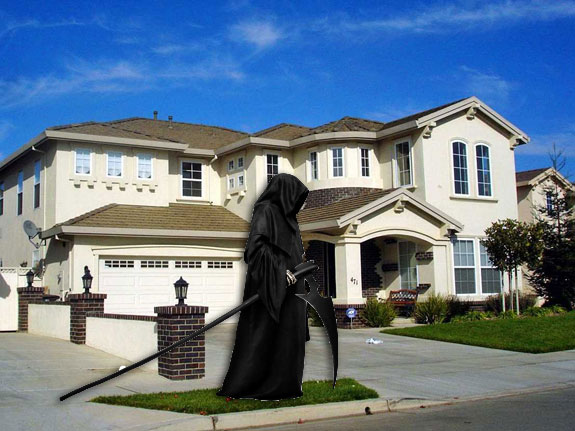Trending
The American McMansion is dying for good

In the late 1990s to mid-2000s, there was perhaps no better indicator of affluence than the McMansion, a cookie-cutter suburban home that typically measures between 3,000 and 5,000 square feet.
In this era of speculative homebuilding before the 2008 financial crisis, bigger was considered better, and buyers sought homes with the same general list of features: five or more bedrooms, a three-car garage, and cathedral ceilings in the master bedroom or living room, for example.
It used to be the case that although McMansions would cost more to construct, they would also sell for more than a typical starter home.
But according to a new report from Bloomberg, that just isn’t the case anymore. Bloomberg cites data from Trulia that shows that the premiums paid for McMansions have declined significantly in 85 of the country’s 100 biggest cities.
To cite one example, in Fort Lauderdale, Florida, the extra money that buyers were expected to be willing to pay to own a McMansion fell by 84% from 2012 to 2016.
In that same city in 2012, a typical McMansion would be valued at $477,000, about 274% more than the area’s other homes. Today, a McMansion would be valued at $611,000, or 190% above the rest of the market.
McMansions are often despised for their mishmash of architectural styles and general ostentatiousness.
“People used to buy a home under the assumption that they would be living there until the end of a long, nebulous concept of time. A house was for life, a marriage of sorts,” the anonymous writer of McMansionHell, a tongue-in-cheek blog that criticizes the design flaws inherent in the American McMansion, told Business Insider.
“The McMansion was never designed to last forever … [it] was built cheaply in order to get maximum items checked off the check-off list for the lowest cost. The designing of houses from the inside out caused the rooflines to be massive and complex.”
The author of McMansionHell — whose ire for the home style began when they saw their rural North Carolina neighborhood be transformed into what they called “Anywhere USA” — said that they hope their criticisms of the McMansion will help bring an end to this architectural era.
“Among the general population, a positive trend is emerging: People are starting to see that bigger isn’t always better — this is evidenced by the tiny-house phenomenon that’s been sweeping the nation the last couple of years,” they said, adding that McMansions could be declining in value in part because millennials are waiting longer to buy homes.
“However, I started McMansionHell with the goal of educating people about architecture and making them aware of the flaws of these houses (both architectural and sociological) through a combination of humor and easily digestible information in a way people who wouldn’t otherwise care about architecture can get engaged with. If my work can stop just one person from bulldozing a forest to build an oversized house that’s a blight on the environment, then I would call McMansionHell a very successful project.”




